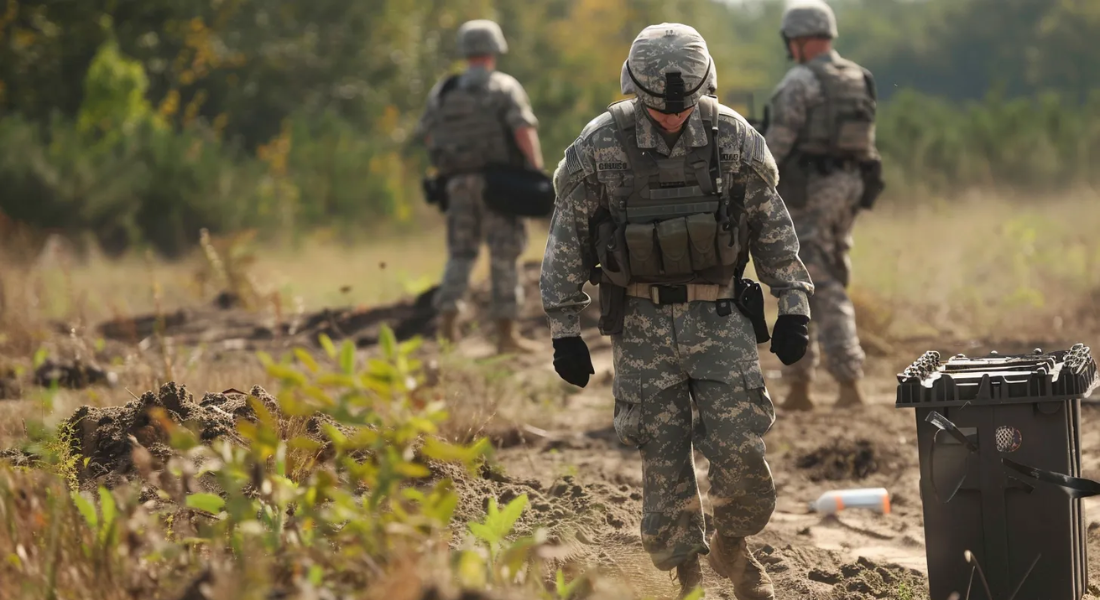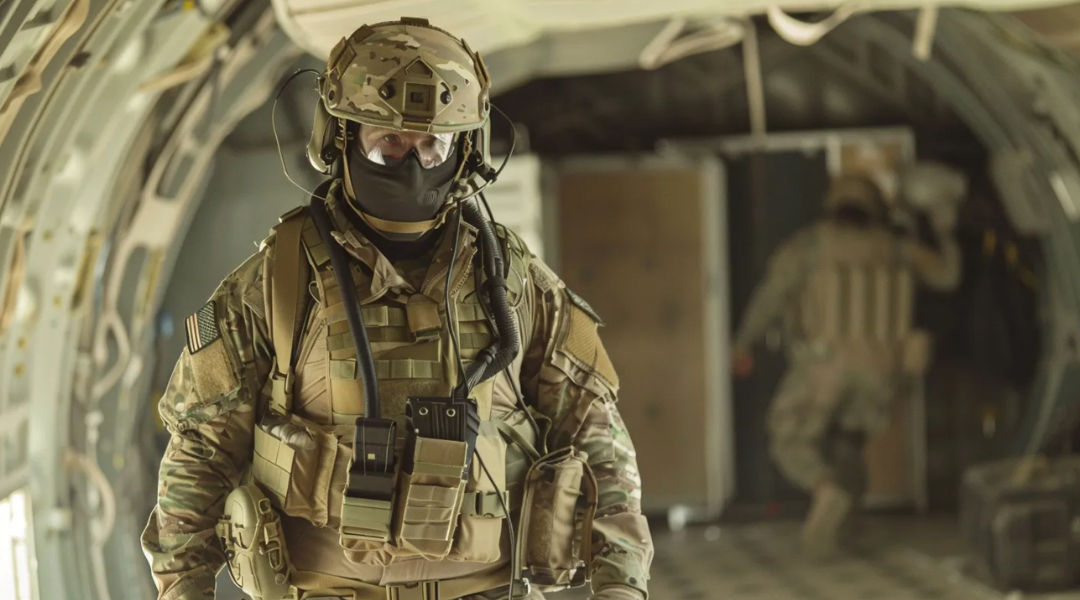Explosive threats, like IEDs and unexploded bombs, are a serious danger in military operations. They can injure or kill soldiers and civilians and put missions at risk. Without proper training, handling these explosives can be deadly. The 28th Explosive Ordnance Disposal (EOD) Company in the U.S. Army is trained to safely deal with these threats. This article will explain how the 28th EOD protects soldiers and helps ensure successful missions.
What is EOD and Why is It Important?
Explosive Ordnance Disposal (EOD) is a vital military function that involves detecting, disarming, and disposing of explosive devices. EOD’s importance has grown with the increased use of improvised explosive devices (IEDs) in modern warfare. Units like the 28th EOD Company provide the U.S. Army with essential skills to counter these threats, protect lives, and ensure mission success. Their expertise covers a wide range of explosives, including traditional munitions, IEDs, and even weapons of mass destruction (WMDs).
EOD’s role is crucial not only in combat zones but also during peacetime. EOD teams often handle unexploded ordnance to keep training areas and civilian zones safe. This dual role makes EOD an essential part of military operations and safety measures.
History of the 28th EOD Company
The 28th Ordnance Company was established at Fort Bragg, North Carolina, to provide specialized EOD support to the Army’s airborne units. Over the years, the company has developed a strong reputation and has become a key component of the Army Special Operations Command. The 28th EOD Company is part of the 192nd EOD Battalion, which is under the 52nd EOD Group and the 20th Chemical, Biological, Radiological, Nuclear, and Explosives (CBRNE) Command.
The 28th EOD Company has a history of deployment, having supported combat operations in Iraq once and Afghanistan three times. Its soldiers have received numerous awards for their bravery, including two Distinguished Service Crosses, highlighting their courage and expertise.
Role of the 28th EOD in Airborne Operations
The 28th EOD Company has a unique role in airborne operations. As an airborne EOD unit, its members are trained to quickly deploy by parachute, providing immediate EOD support to airborne forces. This ability allows the 28th EOD to be among the first to enter a combat zone.
The company’s role isn’t limited to direct combat missions; they also play a critical part in joint forcible entry operations by ensuring landing zones are clear of explosive threats. This combination of airborne capabilities and EOD expertise makes the 28th EOD an invaluable asset to Army Special Operations.
How Does the 28th EOD Support Special Operations?
Supporting Special Operations Forces (SOF) requires specialized skills and capabilities. The 28th EOD Company works closely with elite units like the 75th Ranger Regiment and other Special Operations units. Their main role is to provide EOD support, which includes neutralizing IEDs, clearing explosive devices, and performing other crucial tasks that ensure mission success.
Beyond their work with the 75th Ranger Regiment, the 28th EOD also participates in missions with the Joint Special Operations Command (JSOC) and other top-tier units. Their ability to operate in tough environments and under extreme pressure demonstrates their high level of training and professionalism.
The Rigorous Training for EOD Technicians
Becoming an EOD technician in the 28th EOD Company is one of the toughest challenges in the military. Candidates must first go through a demanding selection and assessment process that tests their physical fitness, mental toughness, and ability to handle explosives. Those who pass are sent to the EOD training course at Fort Bragg, where they learn how to detect, identify, and neutralize various explosive threats.
The training also includes airborne qualifications, ensuring all members of the 28th EOD are prepared to deploy quickly by parachute. This combination of EOD and airborne training makes the 28th EOD one of the Army’s most adaptable units.
Understanding the 28th Green Platoon
The 28th Green Platoon is a specialized group within the 28th EOD Company, known for taking on some of the most difficult and dangerous missions. They are experts in direct action and support Special Forces, often leading the way in combat operations.
Training for the Green Platoon is even more intense than for the rest of the 28th EOD. It includes additional qualifications in advanced demolitions, close-quarters battle, and advanced marksmanship. These unique skills make the Green Platoon a vital part of the 28th EOD’s mission capabilities.

What Does an EOD Technician Do?
An EOD (Explosive Ordnance Disposal) technician is tasked with identifying, disarming, and safely disposing of explosive devices. This role demands a thorough understanding of various types of ordnance, including conventional munitions, improvised explosive devices (IEDs), and chemical weapons. EOD technicians must also be skilled in using specialized equipment designed to safely handle and neutralize explosives.
Within the 28th EOD Company, technicians receive additional training in airborne operations, enabling them to rapidly deploy and provide EOD support to airborne and Special Operations units. This dual expertise makes them invaluable in both conventional military operations and more unconventional warfare scenarios.
Combat Missions: Iraq, Afghanistan, and Beyond
The 28th EOD Company has a notable combat history, having deployed multiple times to conflict zones such as Iraq, Afghanistan, Syria, and beyond. Their missions have varied from clearing explosive threats during active combat to supporting Special Operations Forces in critical, high-risk environments.
The company’s ability to operate effectively in diverse and challenging settings, coupled with their expertise in explosive ordnance disposal, has positioned them as a critical asset in the global war on terrorism. Their operations have not only saved countless lives but also played a significant role in the success of numerous military missions in these volatile regions.
Specialized EOD Equipment and Technology
Technicians in the 28th EOD Company are equipped with cutting-edge technology to detect and neutralize explosive threats. This technology includes advanced bomb disposal robots, portable X-ray machines, and specialized bomb suits designed to protect technicians from explosions.
In addition to personal protective equipment, the company utilizes specially designed vehicles that allow for rapid deployment and response in both urban and rural settings. This combination of high-tech tools and rigorous training ensures the 28th EOD is always prepared to tackle even the most complex explosive threats.
How to Join the 28th EOD Company
Joining the 28th EOD Company requires a blend of physical endurance, mental resilience, and technical skill. Potential candidates must first undergo a comprehensive assessment and selection process that evaluates their fitness for EOD duties. Those who pass this initial phase are then required to complete an intensive EOD training course at Fort Bragg.
After successfully finishing the training, candidates are assigned to the 28th EOD Company, where they continue to refine their skills through continuous training and real-world deployments. Becoming an EOD technician in the 28th EOD Company is challenging, but those who make it through are given the chance to serve in one of the Army’s most prestigious units.
Bullet Point Summary
- EOD Importance: Critical for detecting, disarming, and disposing of explosive devices in combat and peacetime.
- 28th EOD History: Activated at Fort Bragg, key player in combat operations with numerous awards for valor.
- Airborne Operations: Provides rapid EOD support to airborne units, often first in combat zones.
- Special Operations Support: Integral support for 75th Ranger Regiment and Special Operations units.
- Training: Rigorous selection and EOD training course at Fort Bragg, including airborne qualifications.
- 28th Green Platoon: Specialized unit for complex and dangerous missions within the 28th EOD.
- Role of EOD Technicians: Identifying, disarming, and disposing of explosive devices, with airborne capability.
- Combat Missions: Deployed to Iraq, Afghanistan, Syria; critical in the global war on terrorism.
- Specialized Equipment: Advanced technology and vehicles for handling explosive threats.
- Joining the 28th EOD: Requires assessment, rigorous training, and continuous skill development.
The 28th EOD Company stands out as a premier all-hazards formation within the United States Army, showcasing unmatched bravery, expertise, and dedication in every mission they undertake.
FAQ
Q. What is the 28th EOD?
A. The 28th Explosive Ordnance Disposal (EOD) Company is a specialized unit within the U.S. Army responsible for identifying, disarming, and disposing of explosive threats. This includes a wide range of devices, from conventional munitions to improvised explosive devices (IEDs) and chemical weapons. The 28th EOD Company supports both conventional military operations and Special Operations Forces, providing critical expertise in explosive ordnance disposal.
Q. Where is the 28th EOD Stationed?
A. The 28th EOD Company is stationed at Fort Bragg, North Carolina. Fort Bragg is a major Army installation and home to numerous specialized military units, including airborne and Special Operations forces. The strategic location allows the 28th EOD Company to quickly deploy to various regions as needed, supporting both domestic and international missions.
Q. Who is the Commander of the 28th EOD?
A. The current commander of the 28th Explosive Ordnance Disposal (EOD) Company can change frequently due to regular military rotations and assignments. To get the most accurate and up-to-date information on the current commander, it’s best to consult the official U.S. Army website or directly contact Fort Bragg, where the 28th EOD Company is stationed.
Q. What Did EOD Stand For?
A. “EOD” has always stood for Explosive Ordnance Disposal. This term has been consistently used to describe the specialized military and law enforcement field dedicated to the identification, disarmament, and disposal of explosive threats, such as bombs, mines, improvised explosive devices (IEDs), and chemical, biological, radiological, and nuclear (CBRN) hazards. The role and scope of EOD have evolved over time to address new types of explosive threats, but the core mission has remained the same: to protect lives by safely neutralizing dangerous ordnance.

